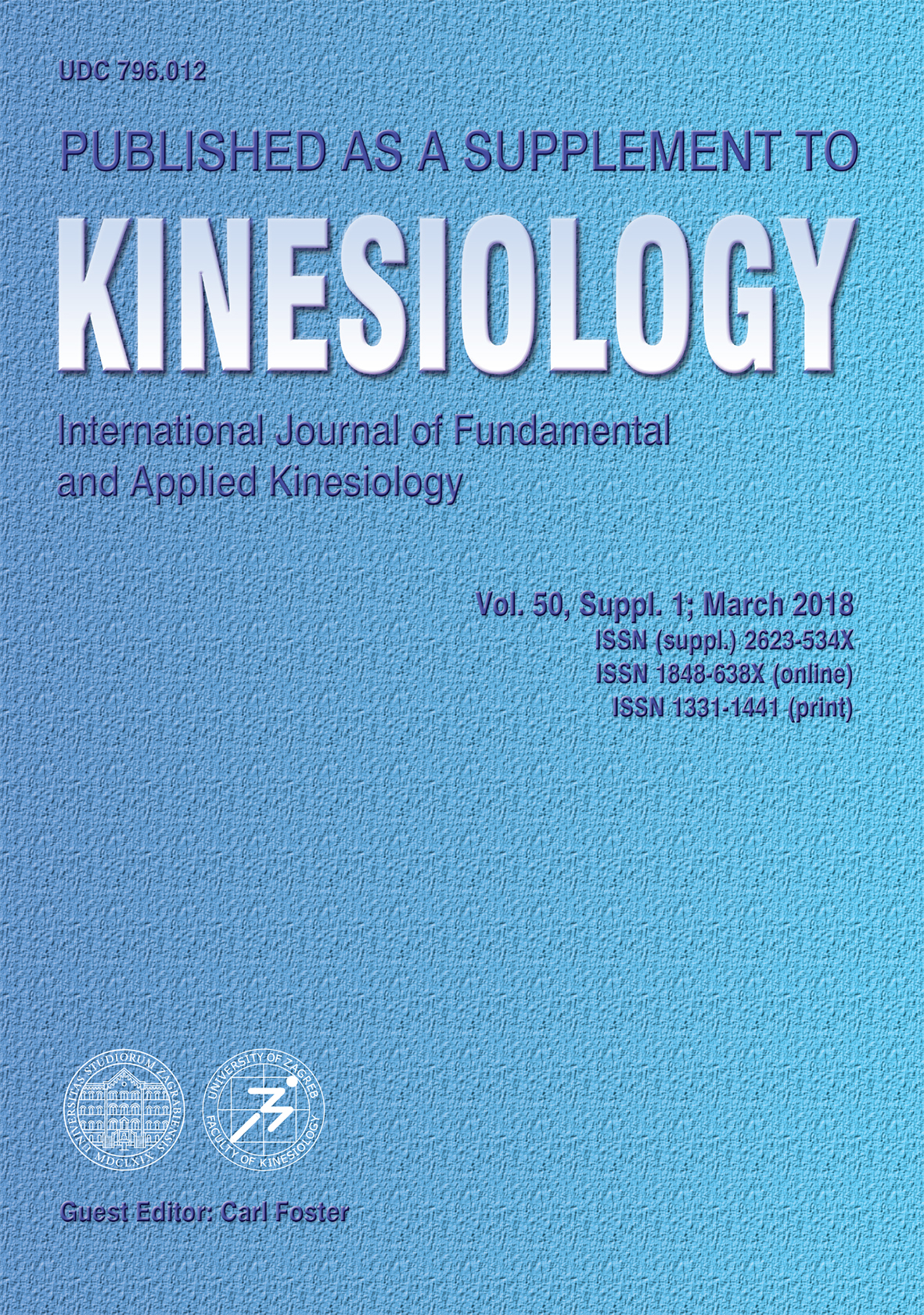INTER-LIMB COORDINATION DYNAMICS: EFFECTS OF VISUAL CONSTRAINTS AND AGE
Abstract
This study aimed to verify the effect of visual afference (eyes open – EO vs. eyes closed – EC) on inphase (IP) and anti-phase (AP) homolateral inter-limb coordination performance in relation to age. Forty individuals (12 youths, age=12±1 years; 16 young adults, age=24±3 years; 12 older adults, age=59±11 years) performed IP and AP synchronized (80, 120, and 180 bpm) hand and foot flexions and extensions. Variability of IP and AP movements was obtained by calculating the within-subject standard deviation of each condition. Significant interactions between coordination mode × age and coordination mode × age × visual afference showed joint effects on IP and AP variability, while no main effects emerged. In the IP-EO condition, posthoc analysis showed higher (p=.0003) variability in older adults (24.8±6.6 s) with respect to young adults (10.5±10.9 s), whereas in the IP-EC condition, older adults showed higher (p=.03) variability (23.4±10.7 s) with respect to both youths (13.7±8.6 s) and young adults (24.1±12.2 s). In both AP conditions, older adults showed lower (p<.002) variability values (EO=9.5±12.1 s; EC=4.6±7.5 s) with respect to the other age groups, with only the youth group showing differences between EO (16.6±12.1 s) and EC (23.6±8.4 s) conditions. Findings show that the age-related worsening of inter-limb coordination is independent of the use of visual afferences. In contrast, at developmental age, visual perception seems to play a differential role depending on the coordinative task complexity (IP/AP). It becomes crucial only in the AP condition, with a lower variability in the EO than in the EC condition indicating youths’ tendency to rely more on visual information for stabilizing complex inter-limb coordination performance.
Key words: vision, hand-foot coordination, motor control
Downloads
How to Cite
Issue
Section
License
Copyright (c) 2018 Kinesiology

This work is licensed under a Creative Commons Attribution-NonCommercial 4.0 International License.
At Faculty of Kinesiology we recognize that access to quality research is vital to the scientific community and beyond. Kinesiology is non-profit journal and all costs of publishing and peer review process are covered by the publisher itself or other funding sources like Ministry of Science and Education of the Republic of Croatia. Full text papers are also available free of charge at http://hrcak.srce.hr/kineziologija. There are no restrictions on self archiving of any form of paper (preprint, postprint and publisher's version).
Articles are distributed under the terms of the CC BY - NC 4.0
Kinesiology does not charge any fees to authors to submit or publish articles in our journal.


